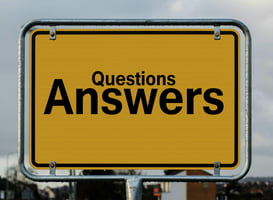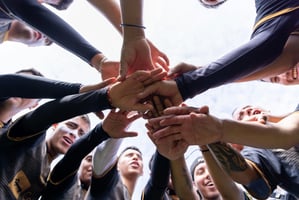You know when you are talking to a kid, they ask you a question and they keep asking a bazillion...
The four habits of Blue Angels that make them an Amazing Team
I recently watched the new Amazon documentary about the Blue Angels, the Navy's elite demo pilot unit. Seeing them live is incredible, but now I appreciate them even more. They make flying look effortless, but it's all about perfectly executed details like timing, debriefs, physical strength, and visualization – all coming together when they're flying just 18 inches apart at 400 mph. There are certain things that Blue Angels do differently that we can all take away as we build our teams.
A lot of the concepts that the Blue Angels practice are common in leadership and team training. You might read them and say “I know all this stuff.” And you are right! However, there is something different about how the Blue Angels practice each of the concepts that puts them on the top - for them, it is not just about knowing it, it is about DOING the things they know to be important every day. It is those habits of doing that take them from great to amazing.
Remembering their Why in words, photos and people.
The movie starts with the new members of the Blue Angel crew (their whole team counts 141 people - it takes more than 6 pilots to make them awesome) reciting their credo at dawn, on the first day of their rotation. From then on, they are reminded of that credo and why they exist every time they walk the hallways of their home base by seeing photos of former pilots and maneuvers on the wall. Every so often, former members visit them and simply hang out with the crew - break bread, give advice, and get to know them. Their why and raison d’etre is all around them - there is never a doubt about why they are doing what they are doing.
Role clarity + practice = deep trust.
At the start of each season, each pilot is assigned a plane number from 1 to 6. The first four planes typically fly together, forming the iconic Blue Angel diamond formation, while planes 5 and 6 often perform solo routines. Each pilot knows their role based on their assigned plane and responsibilities. For instance, Plane 1 leads the maneuvers as the Boss, coordinating the steps for the team, while Plane 4 serves as safety, maintaining clear visibility of the other planes to ensure everyone stays in position.
On the ground, practice sessions involve pilots visualizing every maneuver, following the Boss's instructions, and mentally executing each step. They simulate flight conditions, ensuring they're as prepared as possible for their airborne performances.
Beyond the pilots, the entire team plays a crucial role. Flight chiefs ensure each plane is meticulously inspected and ready for flight, while the crew chief oversees their work, emphasizing redundancy to minimize errors and ensure safety.
This level of teamwork fosters deep trust among the team members. Unlike other fighter jet crews, Blue Angels pilots don't personally check the flight controls before takeoff; they trust their colleagues implicitly. Such reliance underscores the team's commitment to excellence and their steadfast focus on their mission.
They don’t have time for feedback; they MAKE time for feedback.
Practice doesn’t make perfect. Perfect practice makes perfect. After EVERY single flight, they sit down as a team, watch the recording of the practice, and debrief every move. Debrief is part of their practice, it is not something they do when they have time. They also don’t hold anything back - there can’t be any hard feelings because a single mistake can not only cost someone their life, but also the life of the other pilots. The feedback isn’t personal, it is grounded in their standard of excellence, their plan for the flight, and their mutually agreed-upon expectations.
They are glad to be here.
One of the most commonly used phrases by the Blue Angels (at least in the movie) is ‘glad to be here’. They end meetings with it, greet each other with it in the hallway, and share it when getting on the plane. They practice the attitude of gratitude, celebrating the joy of being a Blue Angel. No one is forcing these people to dedicate two years of their lives to being part of his team - they want to be there, are glad to be there AND they say it. Gratitude is not an act, something that we can do once and reap the benefits of; gratitude is a habit.
I am fascinated by teams that move and breathe like one, where words are not needed to understand each other and what to do next, teams that accomplish things none of them could do on their own. Blue Angels are such a team - they take common practices a notch up and make them into habits. It’s those habits, done with sincere depth, that enable them to go from flying with 1 wingman, to flying with three other jets at the same time 18 inches apart.











